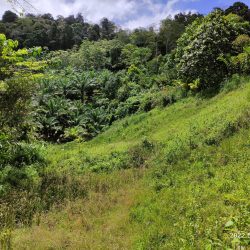-
Table of Contents
Mount Kinabalu: A Majestic Natural Wonder
Mount Kinabalu, standing at 4,095 meters (13,435 feet), is the highest peak in Southeast Asia and a prominent feature of the Malaysian state of Sabah. This majestic mountain is not only a popular destination for climbers and trekkers but also a UNESCO World Heritage Site, recognized for its rich biodiversity and cultural significance. In this article, we will explore the geographical features, ecological importance, cultural heritage, and climbing experience associated with Mount Kinabalu.
Geographical Features of Mount Kinabalu
Mount Kinabalu is part of the Kinabalu Park, which covers an area of approximately 754 square kilometers. The mountain is characterized by its steep granite faces, lush forests, and diverse ecosystems. Here are some key geographical features:
- Granite Peaks: The mountain is primarily composed of granite, which gives it a unique appearance and makes it a challenging climb.
- Climate: The climate varies significantly with altitude, ranging from tropical at the base to alpine conditions near the summit.
- Flora and Fauna: The park is home to over 5,000 plant species, 300 bird species, and numerous mammals, including the endangered Bornean orangutan.
Ecological Importance
Mount Kinabalu is a biodiversity hotspot, making it a critical area for conservation efforts. The mountain’s varied ecosystems support a wide range of species, many of which are endemic to the region. Some notable ecological aspects include:
- Endemic Species: The mountain is home to unique species such as the Kinabalu giant red leech and the Rafflesia arnoldii, the world’s largest flower.
- Climate Change Research: Scientists study the mountain’s ecosystems to understand the impacts of climate change on biodiversity.
- Conservation Efforts: The establishment of Kinabalu Park in 1964 has been crucial in protecting the area’s natural resources and promoting sustainable tourism.
Cultural Heritage
Mount Kinabalu holds significant cultural importance for the indigenous Kadazan-Dusun people, who regard it as a sacred site. The mountain is intertwined with local legends and traditions, making it a focal point of cultural identity. Key cultural aspects include:
- Spiritual Significance: The Kadazan-Dusun believe that the spirits of their ancestors reside on the mountain, and it is often a site for rituals and ceremonies.
- Traditional Practices: The local communities engage in sustainable practices that respect the mountain’s resources, such as traditional farming and herbal medicine.
- Tourism and Culture: Cultural tours and experiences are offered to visitors, allowing them to learn about the indigenous way of life and their connection to the mountain.
The Climbing Experience
Climbing Mount Kinabalu is a popular adventure for both seasoned climbers and casual trekkers. The ascent typically takes two days, with climbers reaching the summit at dawn to witness the breathtaking sunrise. Here are some essential details about the climbing experience:
- Routes: The most common route is the Timpohon Trail, which is well-marked and accessible for most climbers.
- Accommodation: Climbers usually stay at the Laban Rata rest house, located at 3,272 meters (10,735 feet), before making the final push to the summit.
- Preparation: Proper physical preparation and acclimatization are crucial for a successful climb, as altitude sickness can affect climbers.
Conclusion
Mount Kinabalu is not just a mountain; it is a symbol of natural beauty, ecological diversity, and cultural heritage. Its towering granite peaks and rich biodiversity make it a vital area for conservation and research. The mountain’s significance to the indigenous Kadazan-Dusun people adds a layer of cultural depth that enhances its allure. For adventurers, the climbing experience offers a unique opportunity to connect with nature and witness one of the most stunning sunrises in the world. As we continue to explore and appreciate Mount Kinabalu, it is essential to promote sustainable tourism practices that protect this natural wonder for future generations.

